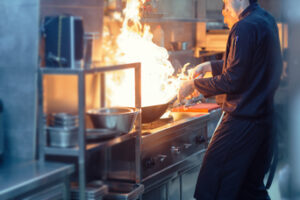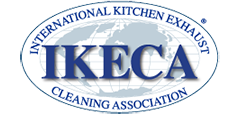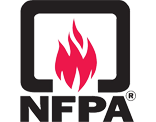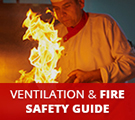4 Crippling Problems With Your Kitchen Fire Prevention Defensive Plan

For over 50 years we have helped many restaurants avoid one of the most serious threats a business can face. You guessed it — fire. We’ve seen a thing or two over the years and can tell you that your kitchen exhaust system is perhaps the greatest asset of your establishment. It is a line of defense against devastating fires and structural damage, but all too often, a few common problems leave this defense mechanism ineffective.
- Poor Maintenance and Access Door Locations
The ducts of the system need to be cleaned regularly, and a thorough cleaning means being able to get into the ducts. Access panels need to be every 12 feet in horizontal ductwork and large enough to support cleaning services. There should be panels installed within three feet of each side of an exhaust fan, and each panel must be grease-tight. Access panels that are poorly placed and poorly designed, and are not kept clean, are a serious fire hazard. Grease, oil and other flammable materials can build up all through the hood, ducts, gutters and filters. - Poor Placement of the Ductwork
You may not have been able to control the initial placement of the ductwork in the kitchen, but it is definitely something you need to be concerned about now. If there is not enough separation between the ductwork and flammable material, you have an accident waiting to happen. There must be fire-resistant materials (fire insulation) between the ductwork and the combustible materials in the immediate surroundings. Hoods or ducts that are close by to workstations should never be used as storage opportunities. This is another simple fix that leaves devastating consequences when unaddressed. - Poor Expansion Plans With Ductwork
If your operations have grown and you have added new areas to the kitchen or reconfigured the space, your kitchen exhaust system should have expanded with the rest of the kitchen. This isn’t a problem unless you connected multiple heat sources to the same ductwork. Separate kitchen compartments need to have their own ducts, fans and fire-isolated shafts. Charcoal and wood-fired ovens need to have independent ventilation systems because of the extreme ignition risk. - Poor Understanding of Fire Prevention Measures
The most common causes of restaurant fires are flammable kitchen materials coming into contact with the cooking flames. This may seem containable, but when the fire gets into the exhaust system and ductwork of the kitchen, as well as the fans and the vents (which are often full of grease buildup), total destruction can be just minutes away. Improper cleaning is just a part of the problem. Failing to have an automatic fire suppression system is another epic safety fail.
Get Back on a Fire Prevention Offensive
You may be thinking that you inherited this kitchen with these problems, and the lack of safety precautions isn’t your fault. While you may not be responsible for the installation problems, it is certainly your responsibility to address these safety concerns now. Fortunately for you, one of the best ways to minimize the risk of fire in the kitchen is through a partnership with Flue Steam. Call us at 800-700-FLUE to find out about our cleaning, repair and inspection services for kitchen exhausts and fire suppression systems.





